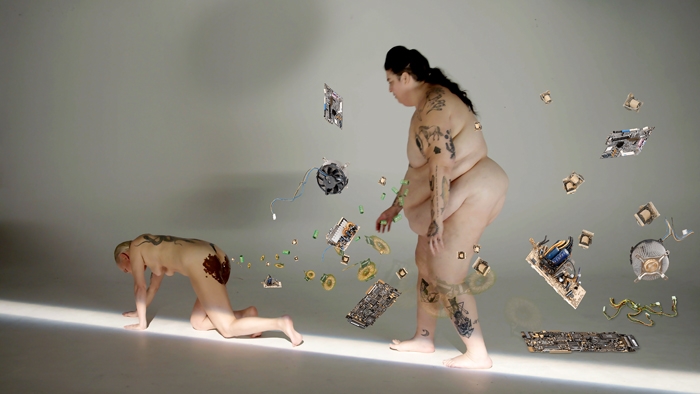ArtReview sent a questionnaire to artists and curators exhibiting in and curating the various national pavilions of the 2019 Venice Biennale, the responses to which will be published daily in the lead-up to the Venice Biennale opening on 11 May.
Shu Lea Cheang is representing Taiwan. The pavilion is located at Palazzo delle Prigioni.
What can you tell us about your exhibition plans for Venice?
For Taiwan in Venice, I am presenting 3x3x6. The title 3x3x6 refers to today’s standardised architecture of industrial imprisonment: a 3 x 3 m² cell constantly monitored by 6 cameras. The exhibition hacks contemporary surveillance techniques to create a trans-punk fiction that questions the hegemonic narrative of the history of sexuality.
What does it mean to ‘represent’ your country? (Do you find it an honour or is it problematic?)
It is a great honor to be represent Taiwan for Venice Biennale. As a Taiwan born artist who has been living abroad most of my adult life practicing art, I am grateful for the recognition and admission endorsed by the Taiwan’s curators, artists and the Taipei Fine Arts Museum.
Is your work transnational or rooted in the local?
3x3x6 is global in its investigation into the transformation of surveillance techniques since the panopticon to include contemporary 3-D facial recognition, AI, and the Internet. The film elements (10 films, 10 minutes each) derived from 10 incarcerated cases around the world propose a trans-punk-fiction in its treatment of crimes and punishment related to sexual and gender preferences.
How does a having a pavilion in Venice make a difference to the art scene in your home country?
Venice Biennale is a common playground where all artists representing different countries, and regions, meet. Any art presented here is seen in the context of representing a country. Here art transcends the artists who produce and create the ‘work’ to become a certain status symbol.
If you’ve been to the biennale before, what’s your earliest or best memory from Venice?
I was one of the four artists representing Taiwan in 2003 and also part of Zone of Urgency at the Arsenale curated by Hou Han Ru that year. I was struggling with network (internet) bandwidth then. This year in 2019 for 3x3x6, I am again asking Venice Telecom for additional bandwidth so that there is workable speed for data transmission.
You’ll no doubt be very busy, but what else are you looking forward to seeing?
This year, media art, digital art and network art is being celebrated, so I am looking forward to seeing works by Tamás Waliczky for Hungary, and Marko Peljhan for the Republic of Slovenia, to name a few.
The Venice Biennale runs 11 May – 24 November
